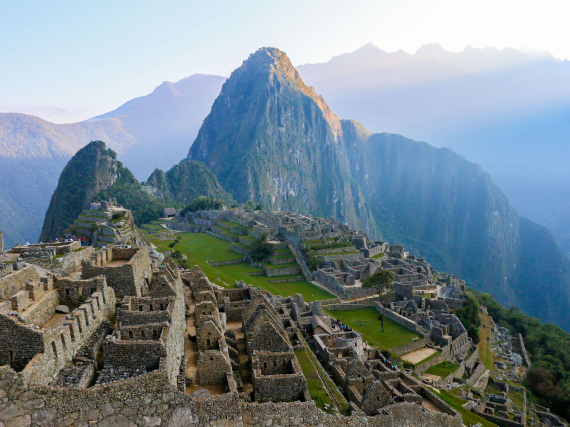While walkability scores highlight amenity-dense cities with ample transit access, they don’t always reflect how easy a city is to walk around in, especially if it’s hilly. San Francisco, for example, ranks very high in walkability but is also famously steep. For those who rely on wheelchairs, scooters, or other mobility aids, steep hills can make getting around a real challenge, and gentler, flat terrain can make all the difference. Check out 10 of the flattest major U.S. cities based on their elevation range — each offering exciting attractions, accessible transportation, and smooth sidewalks.
Long Beach, California
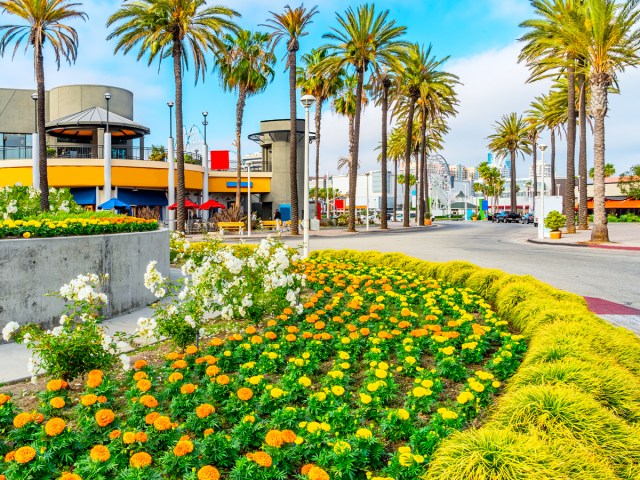
Elevation range: 245 feet
Located just south of Los Angeles, Long Beach offers picture-perfect sunsets, sunny days for sailing, and plenty of flat, walkable sidewalks. The Aquarium of the Pacific is home to over 500 species of marine animals, as well as accessible facilities with ramps and elevators.
Another popular site is the Queen Mary, a historic British ocean liner turned hotel and tourist attraction in Long Beach Harbor. While the ship is not fully wheelchair-accessible, it has been made accessible wherever possible. After spending a leisurely day at the beach, check out Pine Avenue, the hub of downtown Long Beach’s restaurants and nightlife.
Milwaukee, Wisconsin
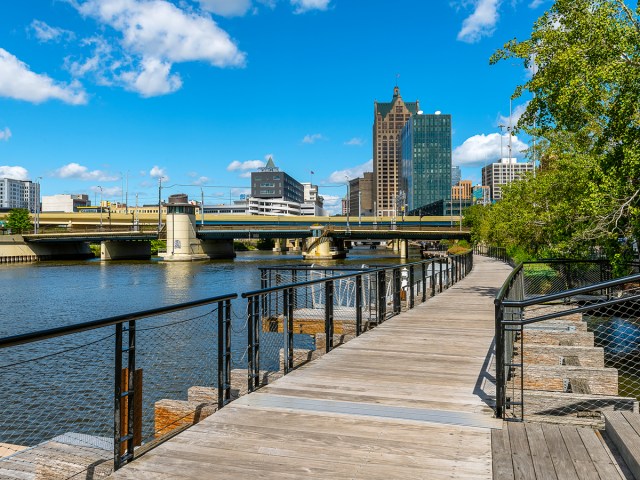
Elevation range: 243 feet
On the shores of Lake Michigan sits “Brew City” — otherwise known as Milwaukee, Wisconsin. Miller Brewing and Pabst Brewing have roots in this storied beer town, and today, dozens of craft breweries line the city’s streets. Fortunately for travelers with limited mobility, getting around downtown is easy.
Milwaukee’s breweries, museums, and parks are thoughtfully designed with accessibility in mind, including the Milwaukee Art Museum and Boerner Botanical Gardens. The Milwaukee RiverWalk, winner of the Urban Land Institute’s Global Award for Excellence, is a 3.1-mile pedestrian path that connects restaurants, hotels, shopping centers, and other attractions.
Chicago, Illinois
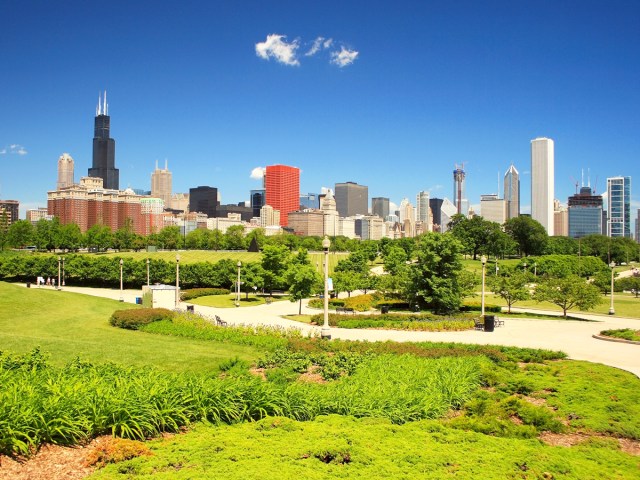
Elevation range: 214 feet
Less than 100 miles south of Milwaukee on Lake Michigan, you’ll find another flat, walkable city. The Windy City is known for its historic architecture, world-class shopping and entertainment, and expansive green spaces.
Navy Pier is a popular family-friendly destination that offers flat, wheelchair-friendly pathways, elevators, and restrooms, along with rides, games, shopping, and seasonal events such as fireworks. Millennium Park, home to the Cloud Gate sculpture (aka “the Bean“), also has wide, flat walkways and ramps, allowing you to explore at your own pace. For a rainy-day retreat, opt for the Art Institute of Chicago or the Adler Planetarium (the oldest planetarium in the country), both excellent options for those with mobility concerns.
Jacksonville, Florida
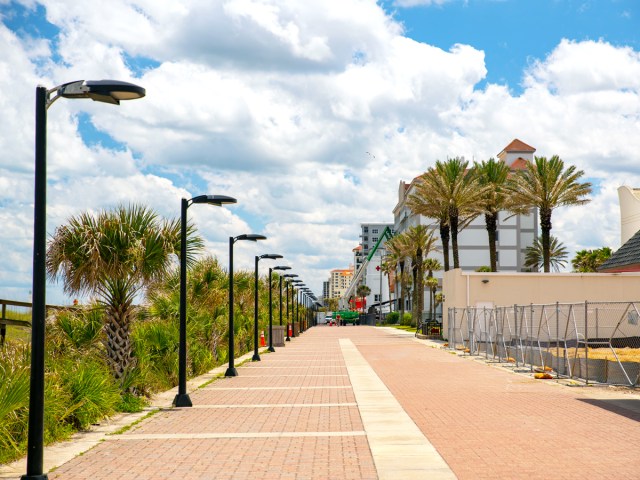
Elevation range: 206 feet
Jacksonville is located in northeast Florida on the St. Johns River, where visitors might catch a glimpse of bottlenose dolphins playing in the brackish water. It’s easy to take a leisurely stroll through this city thanks to its ample sidewalks and flat terrain.
You can get where you need to go at your own pace, whether it’s a Jacksonville Jumbo Shrimp baseball game or a weekend cafe trip to the artsy Riverside neighborhood, where the Cummer Museum of Art and Gardens is located. Jacksonville Beach, Atlantic Beach, and Neptune Beach — all within city limits — also boast wide sidewalks where visitors can walk for miles exploring seaside boutiques before chowing down on local seafood.
Virginia Beach, Virginia
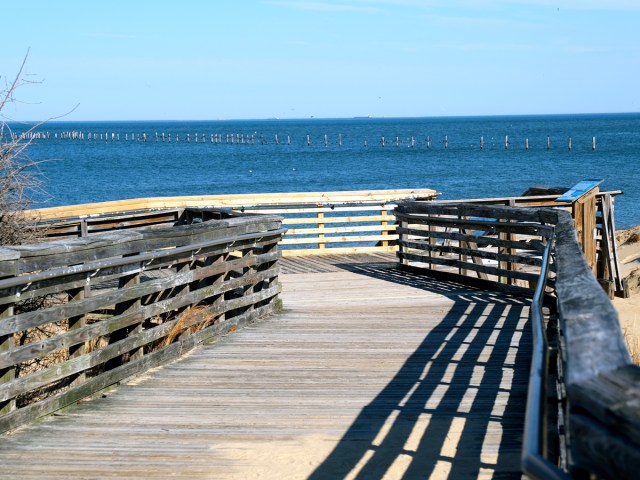
Elevation range: 197 feet
The Virginia Beach Boardwalk is a smooth, wide promenade boasting 3 miles of beachfront pathways, along with popular sites like the Virginia Beach Fishing Pier and the Neptune Statue. All along this buzzing boardwalk, guests can find boutiques and restaurants, many with live entertainment on evenings and weekends. If you prefer sand beneath your feet, access ramps are available at every beach access point from 1st Street to 58th Street.
Plus, you don’t have to travel far to attend some of Virginia Beach’s best annual events — many are held right at the beach. Outdoor concerts, surfing events, naval air shows, holiday festivals, and art shows are just a few of the popular events that take place within walking distance of the boardwalk.
Wichita, Kansas
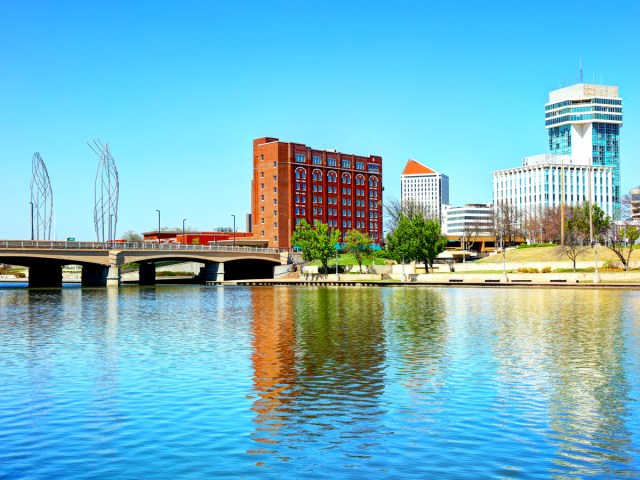
Elevation range: 193 feet
This south-central Kansas city might not be on your vacation radar, but Wichita offers big-city attractions while keeping true to its Midwestern charm. Now a hub for the aviation industry, Wichita has evolved far past its Wild West roots.
Today, remnants of its past can be discovered at Old Cowtown Museum, a recreation of 19th-century Wichita. The museum is situated on the Arkansas River Path, boasting 10 miles of flat, paved, multiuse trails along the city’s waterfront. It connects attractions such as the Wichita Art Museum and Exploration Place, a family-friendly science center.
Fresno, California
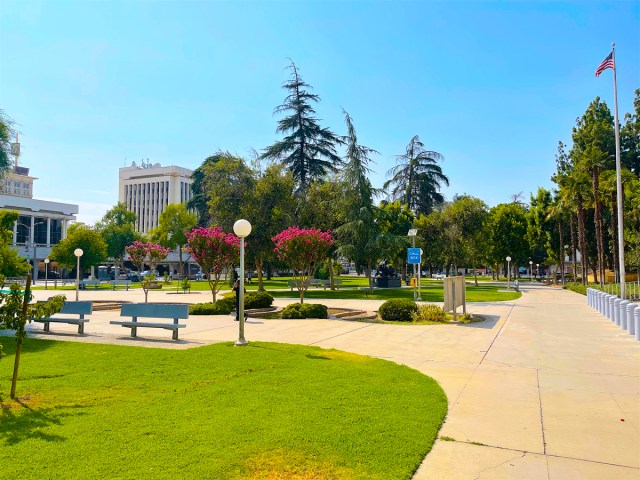
Elevation range: 176 feet
While many California cities are known for their hilly terrain, Fresno, tucked away in the San Joaquin Valley, is one of the state’s flattest major cities. After a day exploring the Fresno Chaffee Zoo (where wheelchairs and electric scooters are available to rent) or shopping in the Mural District, visitors can enjoy Fresno’s burgeoning culinary scene, a result of the city’s diverse cultures.
While tacos or pho might be high on your list, don’t forget to try some raisins — Fresno (along with its suburb Selma) is dubbed the “Raisin Capital of the World.” Fresno also makes a convenient home base for visiting nearby Yosemite, Sequoia, and Kings Canyon national parks.
Detroit, Michigan
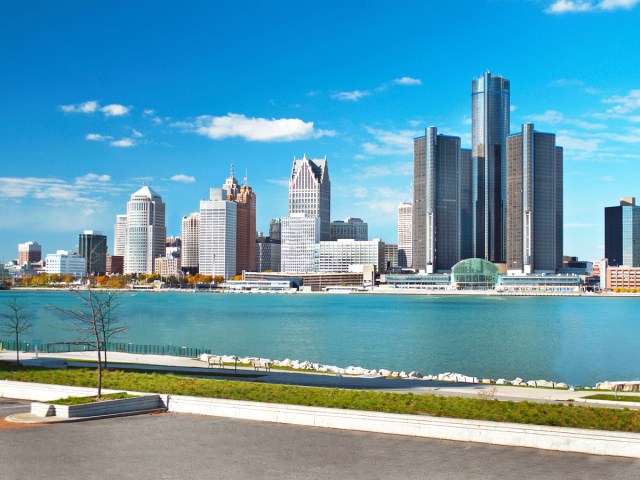
Elevation range: 125 feet
Michigan’s largest city flourished during the 20th-century automotive industry boom. Today, remnants of its heyday can be seen around the city, including at the Henry Ford Museum of American Innovation. The Detroit Opera House was also founded around this time, and opera, ballet, and Broadway performances are still held at this historic venue today, all with accessible seating options.
Nearby, the Detroit Riverwalk is a 5.5-mile scenic paved path with stunning views of the city skyline and public art installations. Holiday events, food truck festivals, and other family-friendly events are held at the Riverwalk annually.
Sacramento, California
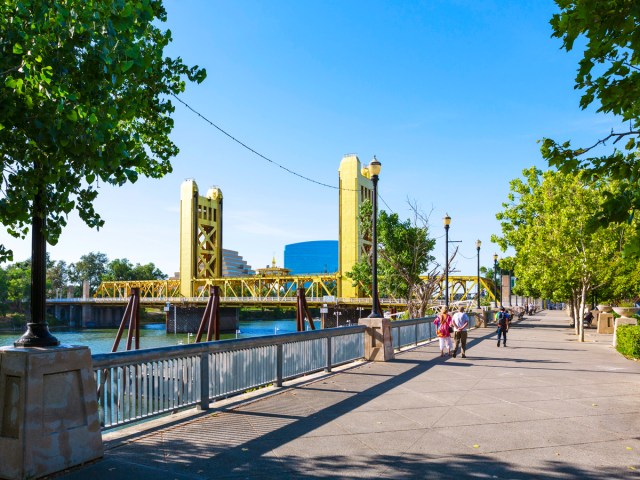
Elevation range: 107 feet
Sacramento is California’s best big city for leisurely getting around, thanks to its generally flat terrain. California’s capital has plenty to do and see, including the historic California State Capitol Museum and the Old Sacramento Waterfront, a 28-acre riverside neighborhood with tours, parks, and museums that offer a glimpse of the city’s gold rush roots — all connected through flat, paved walkways. Sacramento also prides itself on its “farm-to-fork” movement, bringing together local farmers, major restaurants, and award-winning chefs.
Miami, Florida

Elevation range: 52 feet
There’s a reason why Miami is consistently ranked among the most-visited cities in the United States: World-class museums, vibrant nightlife, and gourmet dining experiences are all within walking distance of Miami’s many waterfront hotels. The Baywalk and Riverwalk are two overlapping waterfront paths, each boasting nearly 5 miles of pedestrian walkways along Biscayne Bay and the Miami River.
Across Biscayne Bay, Miami Beach is just as accessible as its urban neighbor, boasting wide, palm tree-lined sidewalks and miles of flat, beachside terrain. The beachside restrooms are ADA-compliant, and the city offers free beach wheelchairs for rent. With its commitment to accessibility, Miami ensures that all visitors can enjoy its diverse attractions and lively culture.
About the data: To compile this list, we consulted terrain analysis from researcher Nate Rasmussen, who charted the elevation range (the difference between the highest and lowest point within each city boundary) in the 50 largest cities in the U.S. Check out the full report here.
More from our network
Daily Passport is part of Inbox Studio, which publishes content that uplifts, informs, and inspires.

